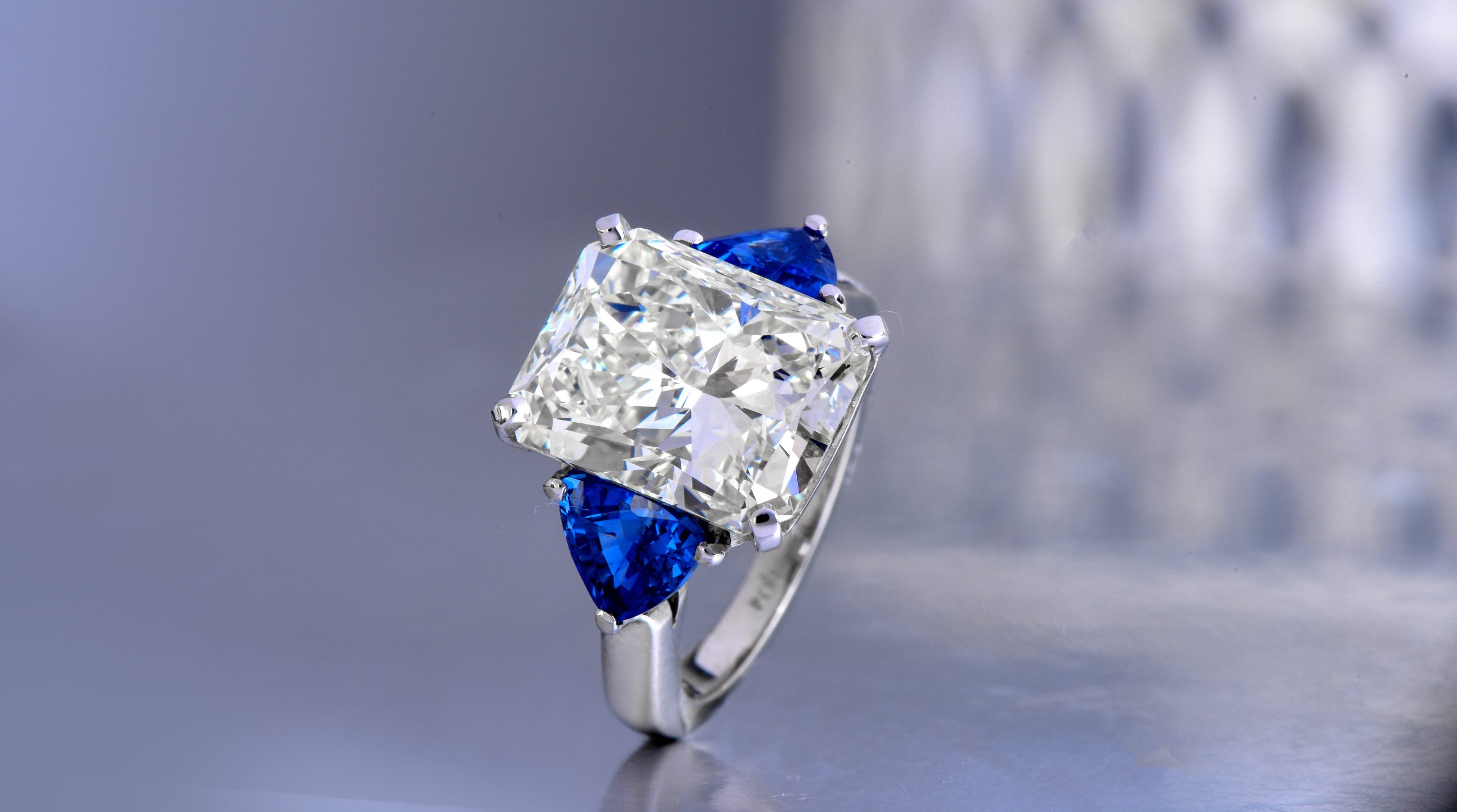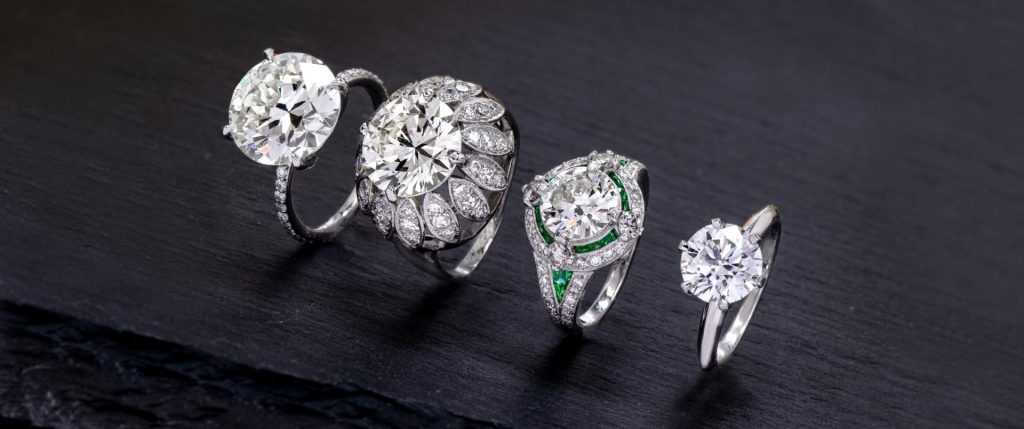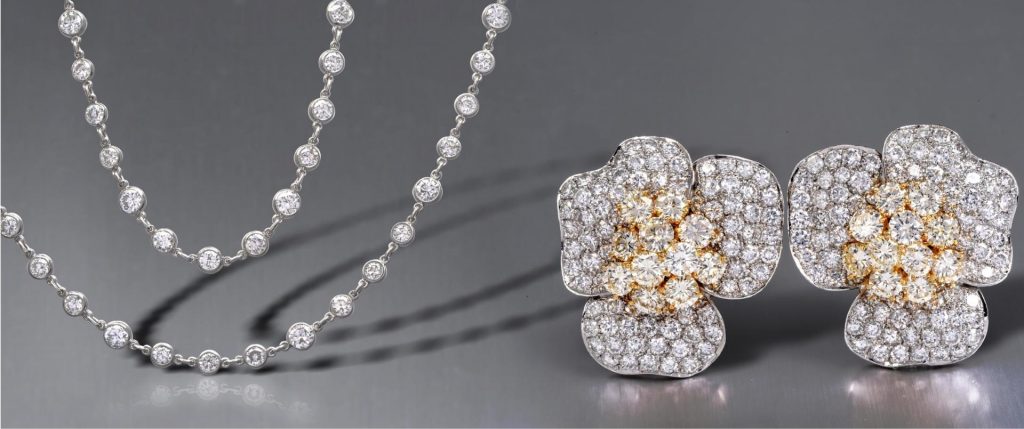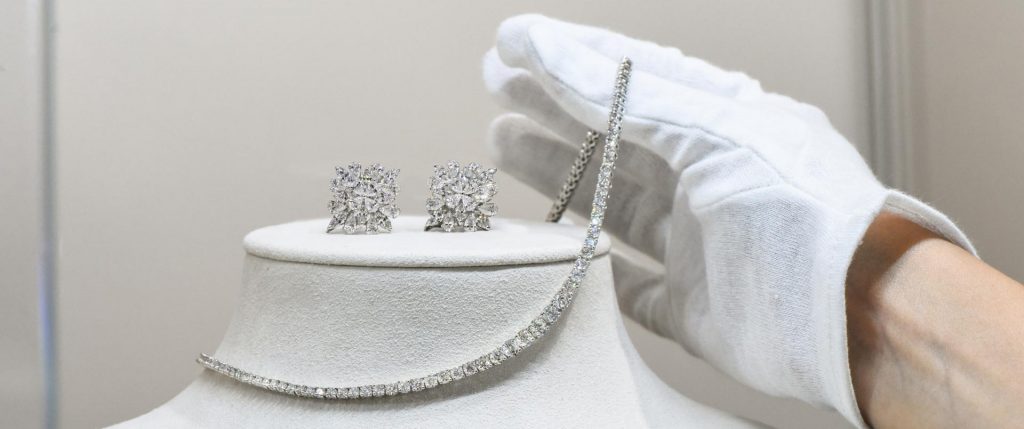
As you might know, it takes from 1-3 billion years for a natural diamond to develop miles under the earth. Once formed, natural diamonds are moved up to the Earth’s crust by volcanic explosions, so they become accessible for mining purposes. The entire process is time-consuming and expensive, however, what you are buying is a natural, precious gemstone, not a mass-produced, generic item. Examples of classic Natural Diamond Engagement Rings can be found in our Natural Diamond Engagement Ring Collection.
What is a lab-grown diamond? Are lab-grown diamonds real?
You’ve probably heard about laboratory-grown diamonds.
They have been getting a lot of attention in recent years because they’ve been heavily marketed as cheaper and less environmentally damaging than naturally mined diamonds.
We’ll break that down for you in a minute.
How Lab-Grown Diamonds Are Made
What exactly are lab-grown diamonds and how are they made? It sounds impossible to artificially duplicate such a wonder of nature, doesn’t it? However, it can be done. Lab-grown, cultured, man-made or synthetic diamonds are created in a laboratory by replicating the processes that form natural diamonds. They are made by subjecting carbon to extremely high temperatures and high pressure in a controlled environment.
Laboratories use two different methods to grow diamonds – High Pressure High Temperature (HPHT) and Chemical Vapor Deposition (CVD) When the HPHT method is used, a small diamond seed is placed into a piece of carbon. The pressure and heat eventually melt the carbon forming a diamond around the original seed. Similarly, the CVD method uses a diamond seed which is heated and subjected to carbon rich gases which are ionized into plasma, breaking down the molecular bond of the gas and resulting in the formation of a new diamond.
Both methods can ‘grow’ a diamond in less than a month.
It sounds completely artificial – and it is. Admittedly, synthetic diamonds have the same internal structure and composition as natural diamonds, and they are graded using the same 4C’s of diamond quality, but are you really getting the same thing? If you are in the market for an engagement, anniversary or other type of ring to celebrate a special milestone in your life, does a lab-grown diamond give the same message as a ‘real’ one? Does it symbolize your love, commitment and relationship in the same way?
View this post on Instagram
Environmental Impact?
It sounds politically correct to say that you are buying a ‘sustainable’ diamond, which doesn’t cause as much environmental damage as mining. However, mimicking a process that takes billions of years in a matter of weeks is not without its own set of environmental issues. The machinery required to duplicate heat and pressure needs to run 24 hours a day, seven days a week. Laboratories use enormous microwave heat generators to replicate the earth’s process, so their carbon footprint is questionable at best, plus many use fossil fuels to power their machinery.
It is estimated that 50-60 percent of lab-grown diamonds are produced in China using high pressure, high temperature (HPHT) technology rather than the ‘cleaner’ chemical vapor disposition (CVD) technique popular in the US and India. Regulation is non-existent, so consumers do not really know that what they are buying is “green.”
Cost vs. Long-Term Value
Lab-grown diamond pricing is anywhere from 40% – 50 % lower than for a natural one, which sounds very attractive to some buyers. Unfortunately, once you have purchased a synthetic diamond, you will find its resale value is rock bottom. Many retailers who are happy to first sell you a lab-grown diamond, will not buy it back from you because they know they cannot make money on it.
The resale market for synthetic diamonds is poor, and as their production continues to get cheaper and cheaper with competition from factories in China, prices and resale values will drop even further. A similar thing happened with the introduction of synthetic rubies, emeralds and sapphires; their price and resale value went down significantly as competition and production increased. In the end, there’s nothing like real gemstones.
On the other hand, if you purchase a quality natural diamond, especially if it has vintage or antique diamond appeal, it can easily increase in value over time, so you will have something special to pass on to your heirs.
Enduring Symbolism
Natural diamonds are billions of years old. They are precious gems that have symbolism and value beyond their cost. Synthetic diamonds can never have the same appeal. Ask yourself if you would pay the same price for an ersatz handbag or a fake, ‘similar’ designer fragrance, as you would for the real thing. Would you value it as much? We don’t think so.
The rarity, beauty, and strength of Natural Diamonds have come to symbolize enduring love, commitment and success in life.
At Dover Jewelry, we specialize in bringing you one-of-a-kind vintage, estate, and antique diamond jewelry to celebrate those special moments with the people in your life you value most.
If you are on the hunt for a Truly Natural Diamond or any Gemstone for that matter, we invite you to stop by our Brickell Jewelry Showroom to enjoy our customized, white-glove service boutique environment. Our GIA Certified Gemologists welcome the opportunity to discuss the true facts and realizations of making this singular investment and allowing the education to help you make the best choice for you.
Our product selection is unique and varied, and we think you’ll find just what you are looking for.
We also buy diamond and gold jewelry and sell special antique, vintage, estate and collectible pieces every day in our New Miami headquarters.
Our young, energetic Gem Team on Brickell Ave Miami is ready to meet with you, one-on-one, to choose an unforgettable Natural for a loved one or for yourself.
Contact our Gem Team today and let us show you the ‘real thing.’



